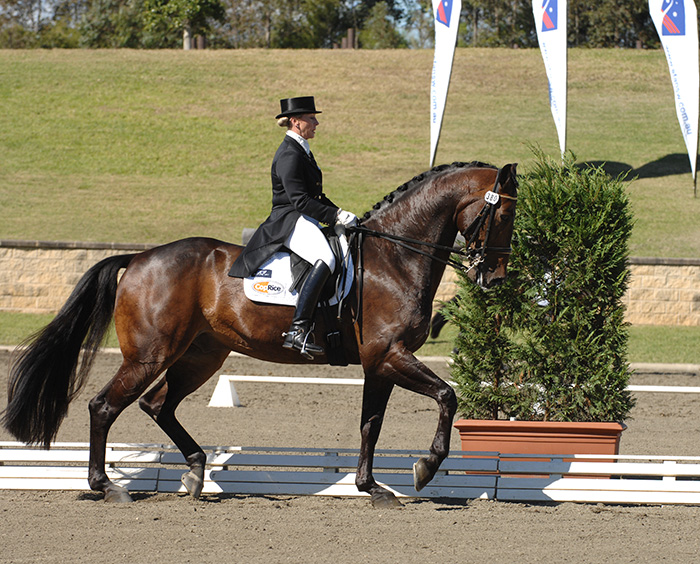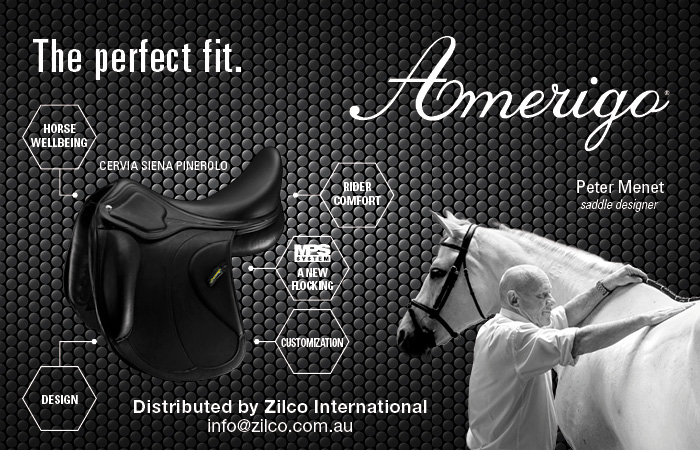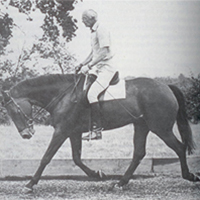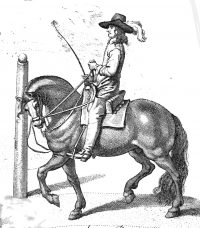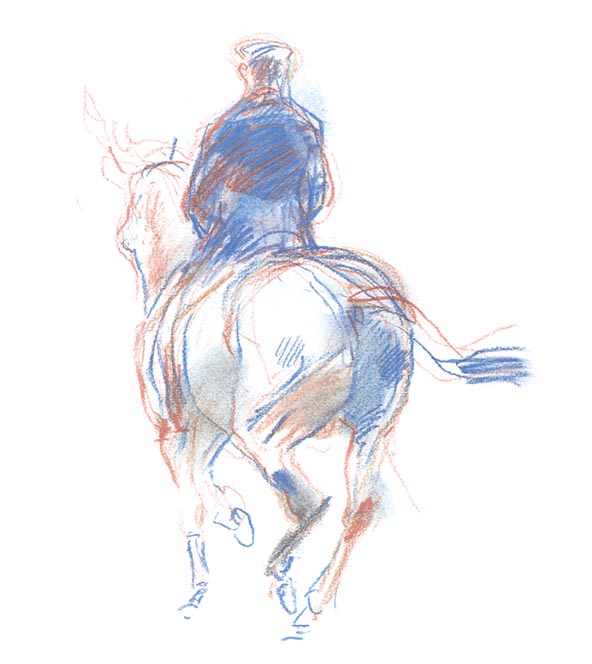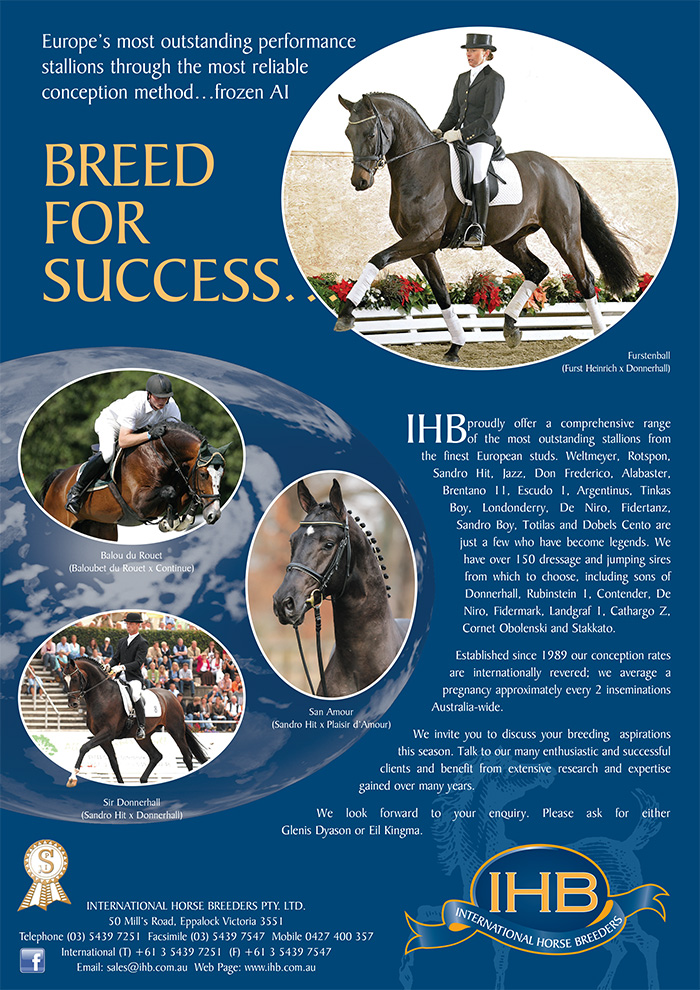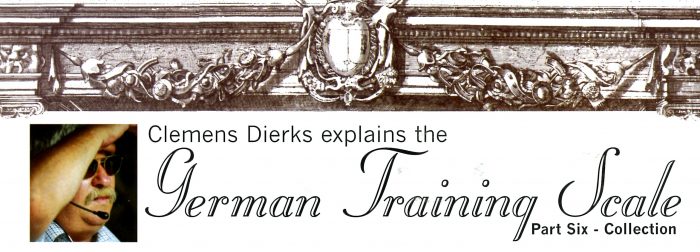
Once again, we start with our text from the official handbook of the German Riding Federation:
“COLLECTION: The aim of all gymnastic training is to create a useful horse which is willing to perform. The deciding factor here is that the horse’s and the rider’s weight are distributed evenly over all four legs. To achieve this, the carrying power of the hind legs has to be increased. The front legs, whose original function was of a ‘supporting and braking’ nature, carried most of the weight. Their burden has to be reduced, whereas the hind legs, which by nature have a predominantly pushing role, must now take up some of the weight-carrying task of the front legs.”
(The Principles of Riding, page 175)
The great German riding master, Waldemar Seunig, describes well the process of achieving the collected trot: “The development of the collected trot is best achieved after a good medium trot has been executed, by gradually shortening the strides. At the same time it is important to retain lively yet cadenced steps flowing from a supple shoulder, and the impulsion achieved at the medium trot. The impulsion now is more elevated rather than forward. The engaged hindquarters from which the weight has shifted ‘ lifts’ the forehand and makes possible its elegant, round movement.”
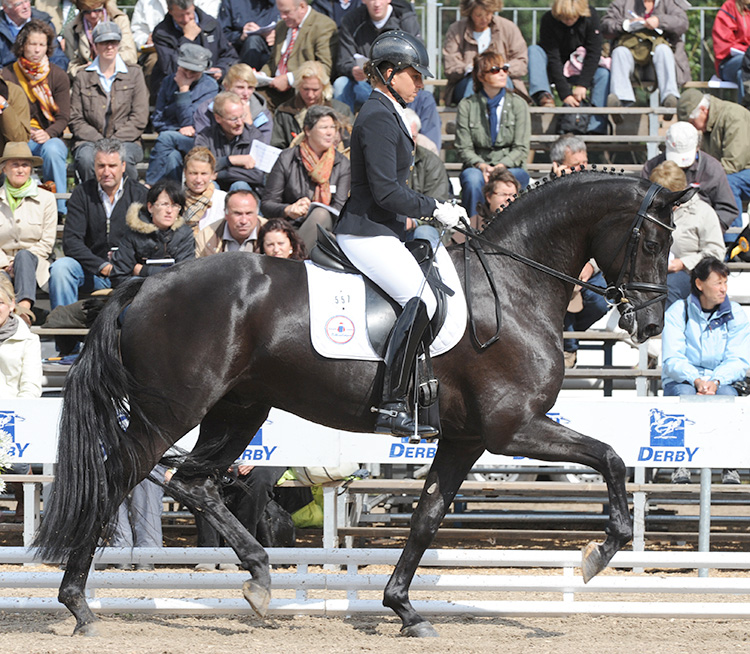
German Gold Medal team member, Dorothee Schneider and a four-year-old stallion, Horatio, a young stallion moving towards collection
“Through the energy of impulsion mobilised from within himself, the horse is now prepared, in his physique and emotional attentiveness, to respond instantly to the slightest indications to change his tempo, posture, direction or gait.”
“Aids to the Collected Trot: With braced back and knees down, legs immediately behind the girth, rhe rider asks the horse to move his hind legs energetically. The sensitivehand keeps the mouth fresh,the poll appears to have been oiled to complete flexibility. The horse is straight!”
(The Essence of Horsemanship)

Meanwhile back in the arena at Dierks Stables, Judy has started to ride some big schooling canter pirouettes, it is time to talk about the final principle – collection- the one that seems to cause the most problems…
Let Clemens Dierks explain: “Collection is more self carriage of the horse, moving more weight to the hindquarters, getting more engagement, more activity, and a more uphill expression of the whole horse. The frame shortens a little bit with it as the front comes up. Without collection you cannot ride pirouettes or piaffe – but you also can’t produce a lovely cadenced trot.”
“Once again, we achieve collection through transitions, working the horse from behind, making sure he engages well. Lots of half halts… ”
“The contact actually comes lighter as the horse moves more weight to the hindquarters and carries himself more.”

“If the carrying capacity of the quarters is developed sufficiently, the horse is able to carry his own and his rider’s weight in perfect balance. To examine whether a horse is in balance or not, the rider can be asked to ‘give and retake’ the reins, as is done in some dressage tests. Then, for a few strides, the rider has to give up the contact, which anyway at this stage of training is only light. Momentarily without any contact, a balanced horse will not change tempo nor change his head and neck carriage.”
The Principles of Riding
more follows
Once again, the counter canter exercise was used as a collecting strategy: “It teaches the balance, and confirms the aids, and that balance means collection and self carriage. Which leg the horse canters on in this exercise should not affect the way you can flex the horse. A lot of horses, if you flex them to the outside, then they make a flying change – these horses are not through, they are stiff, they are not really on your seat – just on the hands. Everything comes from your seat – the most important thing in counter canter is that you don’t bend the horse to the inside, the more you bend to the inside, the less straight the horse will go.”
“Collection cannot be obtained without impulsion, and this may require some further explanation. The rider already working at this advanced level will not need to be reminded that useful collection, which is collection that retains its element of impulsion, must be obtained from the back to the front. The bringing of the hindlegs a little further under the body mass, a little closer to the front legs will never occur if the horse is at rest or idling. In the horse’s natural state, without a rider, collection will occur only if he is subject to some external stimulation such as fear or excitement. It requires a degree of energy and activity quite beyond normal. In ridden work, when fear and excitementare absent, the necessary stimulation must emanate from the rider.”
Anthony Crossley, Advanced Dressage
Right now Judy is getting some short steps, the beginnings of piaffe: “This is an exercise for the professional. These are just a few warmup steps that are better than you see in a lotof tests. It is like European training, it is something every European professional would do, just a few little short steps.”

There is a difference between taking them when they are offered, and pushing the horse to do them?
“Judy hasn’t touched the horse, you can see how he goes into it by himself, there is a little bit of an evasion feeling because it is hard work but over time we have the advantage of having a gymnastic horse being trained step by step over the next five years. You just shorten the walk up a little bit, and he will offer it himself. If the horse doesn’t offer it himself, you will never get it.
Can these horses with a bit of nerve start to offer false passage at this stage?
“That would be a horse holding himself, that is not loose. If that happens with us, we go immediately out of it by getting them quicker, more active behind. Some horses are more talented for passage than others. Having a bit of nerve is what you also need because you must have ahorse with a bit of spark to perform with expression. You don’t want a horse that you have to kick through a test, you want a horse that takes you through the test.
Do you start this work on the ground?
“Sometimes the first half steps, we introduce that in hand. I don’t do much work on the arena with the whip helping the rider, because I find that unless the rider can do it by themselves, then the horse learns, and as soon as I walk away, he does not work with the rider. It is different working with riders who can ride, then you can help them with that little bit more, and · that works.”
A horse that does not go well upon his haunches, can never do well in the Manege so that our whole study is to put him upon them.
William Cavendish, Duke of Norfolk,
A General System of Horsemanship
Much of the work – as you have seen throughout this series – is done in a snaffle, although by the time we reached the final photo shoot, Frontier had moved on into the double bridle:
“It is not such a big deal,”says Clemens. “The double can make it easier sometimes, it is a touch more effective, but if the horse won’t work in a snaffle, it won’t work in a double. Some are better in the double, some better in the snaffle, but the basic work we did in the snaffle before moving on to the double.”
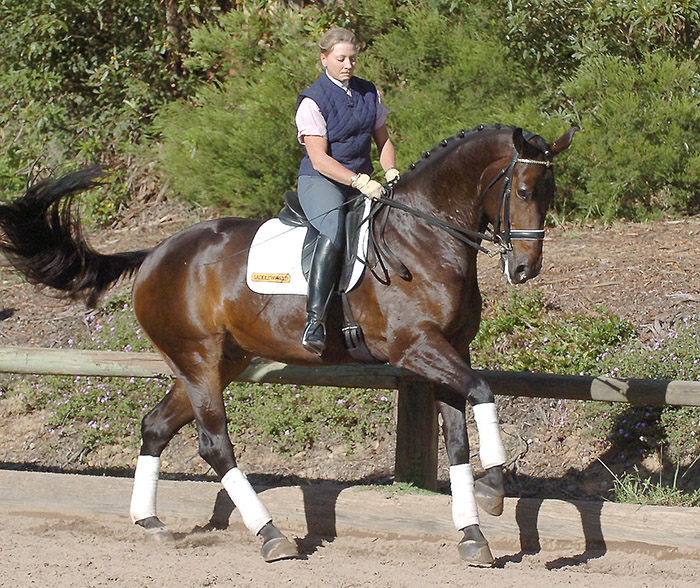
Working through Flying changes, Passage and Piaffe
Clemens Dierks stresses that the basis of good flying changes is the quality of the canter:
‘The collected canter has a number of different ‘collections’ within the test. The flying change must be ridden much more forward, than for example a canter pirouette, which is also collected. You get different variations for different movements. Half pass again may be different from a collected canter on a straight line.”
‘The most important thing in the changes is that they come out of the biggest, most forward, collected canter, otherwise they won’t be straight, you won’t get the expression and lift.”
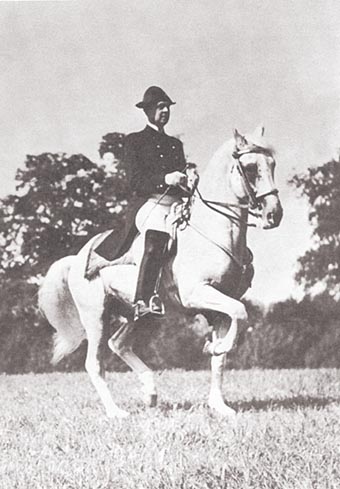
The difference between the various tempos – the ordinary trot, the collected trot and the extended trot – does not lie in the acceleration or the reduction of the pace, but exclusively in the lengthening of the stride or the elevation of the steps while maintaining the rhythm.
Alois Podhajsky – The Complete Training of horse and rider
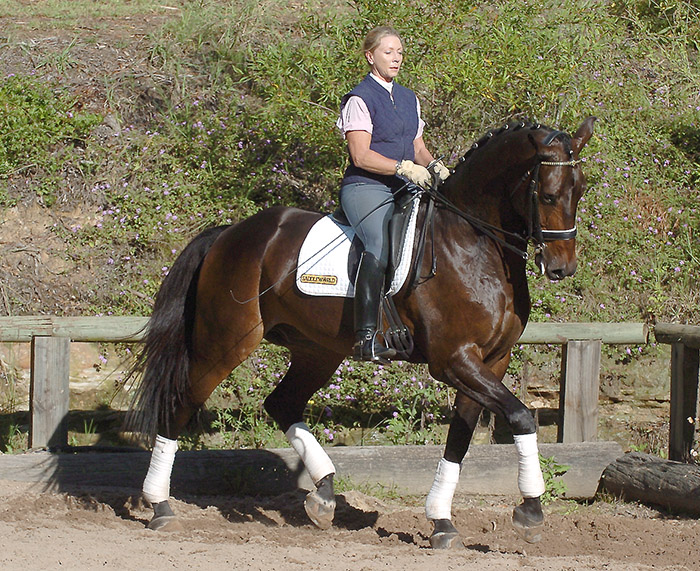
On passage: “Every horse has a different passage but really what you look for, is big expression in the form, the forearm almost horizontal and the hindquarters well stepping under, and with a very nice long moment of suspension, and all the while maintaining the rhythm and regularity.”
You increase the activity of the trot and keep the cadence. You then start to shorten it as if you wanted to trot on the spot. Use your torso and waist, not the reins. In this way the piaffer is a balancing feat and not a forced restraint from which the horse is trying to escape.
Nuno Oliveira, Horse and Rider: Annotated Sketches
(with Jean-Louis Sauvat)
That’s the hard thing in passage – so often we see that limp / hop pattern in passage?
“That is basically all rider created. If you ever feel that, you are asking too much at that time, ride bigger, ride more forward, and you only bring him back into passage to the degree that he maintains a rhythm. When you see that limp and hop, it is because the horse has been asked to do more than it can physically cope with, and therefore they lose it, and the biggest mistake is that the riders just keep passaging like that, so they are actually training that rubbish.”
Piaffe?
“Piaffe is more difficult, and it is also difficult to train the transitions – that is the hardest thing for the horse – to go from passage to piaffe and out of passage. They are two totally different things, piaffe and passage. In piaffe the horse has to sit more, with more activity in a different way, less moment of suspension – there is only a very minimal moment of suspension in piaffe – but the activity is greater, a little bit quicker, and the legs move totally differently. Instead of going forward they only go up and down.”
Is it important with younger horses to maintain a forward tendency in piaffe?
“So long as the forward tendency is maintained evenly. Sometimes I have to bring a horse back to get it even. I have seen some horses trained so they make a big stride, then a short stride, and many mistakes can come in there. The biggest mistake is asking horses too soon to stay too straight, too much on a spot. I feel that sometimes it is better to do a touch of leg yielding – whenever there is resistance on a straight, I turn it immediately to leg yielding to the opposite. Through that the horses will learn to be straight.”
“The interesting thing is that you can have problems with piaffe unless you do it early enough in hand, just two or three steps. The perception is always that you start piaffe at a later stage but if you leave it to long, you may find that it is already lost. With a four or five year old, there is no harm in doing one or two half steps, just bringing the idea in – and exercise builds up strength. Sometimes people don’t ask until the horse is ten years old, and then it is too old to start.”
Our thanks to Clemens and Judy and Frontier for presenting this wonderful explanation of the most successful dressage system in the world: The German Training Scale and thanks to all those old and new masters who have contributed their thoughts along the way!
